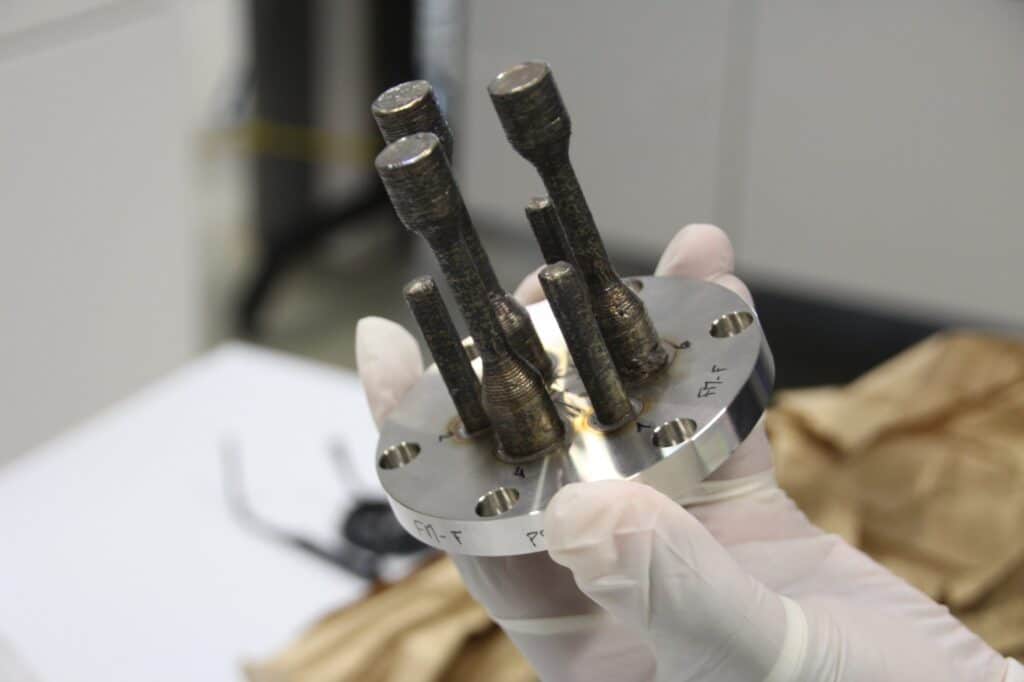Cébazat, France – January 31, 2024 – AddUp, a global metal additive manufacturing OEM, and Airbus Defence & Space, have delivered the first metal 3D printer to the European Space Agency. This metal 3D printer was developed by an industrial team led by Airbus Defence and Space under a contract with the European Space Agency (ESA), co-funded by Airbus Defence and Space. The metal 3D printer was designed to evaluate the capabilities and performance of additive technology and to perform metal disposition in 3D under sustained microgravity conditions. On Tuesday, January 30, 2024, the Metal 3D Printer was successfully launched by NASA Mission NG-20 towards the International Space Station. Printing operations are expected to start in late February or early March.
The ability to manufacture spare parts directly in space, without having to transport them from Earth, marks a new stage to propel the next generation of space exploration. Not only will this generate millions in savings, it will also pave the way for human spaceflight by making their autonomous operation viable.
Metal3D Project
The “Metal3D” project began in 2016 when the European Space Agency awarded the contract to Airbus Defence & Space. A key objective: To create the first metal 3D printer to safely operate under microgravity, aboard the International Space Station. AddUp, a leader in metal 3D printing, has been supporting the Airbus group for over 10 years, not only with the supply of flight parts, but also on a variety of innovation projects.
AddUp’s Technical Director, Sébastien Devroe comments on the expertise the AddUp team brought to the project, “The development of the Metal 3D printer relies on the unique multidisciplinary expertise of AddUp’s engineers and researchers. Our staff has expertise across a variety of additive manufacturing processes, machine design, programming and operation optimization. Our teams have supported the development of this first space metal 3D printer, which will soon be in orbit. The metal 3D printer has been designed and optimized to meet the conditions and environment of the International Space Station”
“AddUp was chosen for this project based on a long history and partnership rooted in exploration and innovation.” Explains Elodie Viau, Head of Engineering at Airbus Space Systems. “We were confident that with the knowledge and experience the AddUp team has, combined with the technological expertise of Airbus, together we would be successful in delivering a high quality and efficient metal 3D printer to support the exploration of space.”

Samples produced by the Metal 3D Printer prior to launch to the space station. Photo courtesy of ESA.
An Innovation Marking a New Stage in Space Exploration
The metal 3D printer will be installed in the ISS in early 2024, on board the Columbus European Science Module, alongside the other experiments carried out by European teams. Four specimen are planned to be printed by the metal 3D printer in the Columbus module and for reference and comparison, these specimen will also be printed on ground. The specimens will be returned to Earth, analyzed and compared with those produced on the ground. The aim of these experiments is to make extraterrestrial metal 3D printing viable, for example, for the manufacture of spare parts. Metal 3D printing in space would limit the logistics needs from Earth, which can take up to 12 months between preparation, take-off and delivery.
The view expressed herein can in no way be taken to reflect the official opinion of the European Space Agency.